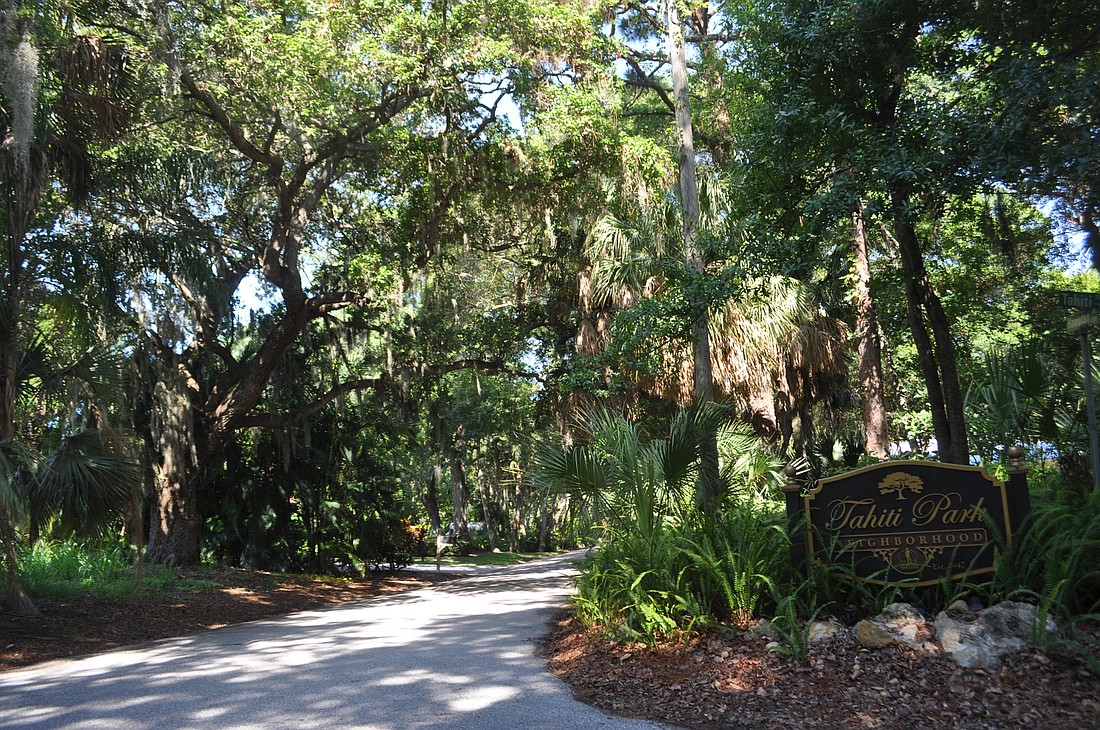- April 27, 2024
-
-
Loading

Loading

If a tree is removed in Sarasota, city officials want to ensure neighboring residents have ample warning.
That’s the intent behind one of many changes proposed for the city’s tree protection ordinance. On Dec. 15, staff met with residents to discuss tree regulations for the second time since November. The public workshops signal a new priority that manifested in 2015, the city’s reaction to a push from citizen activists to preserve the urban canopy.
In addition to better identifying trees that will be removed, the latest round of proposals are also designed to protect trees that will remain in the ground. New rules would outline the maximum size of vehicles traveling down tree-heavy roads, allow for taller trees in certain areas and require stricter care for trees on construction sites.
City staff originally envisioned these workshops as a broad community conversation that would include developers and builders, as well as concerned citizens. However, neighborhood representatives dominated the turnout for both meetings. As staff outlined proposals, speakers pushed for more stringent definitions and steeper fines with little resistance from any other members of the audience.
Tim Litchet, the city’s director of neighborhood and development services, said he thinks it’s a positive sign that there hasn’t been a significant response from developers. Even if the meetings felt one-sided, it didn’t mean builders weren’t following the conversation.
"I haven’t heard back that they’re organizing to fight it, for what that’s worth." — Tim Litchet
He’s gotten some input from builders regarding the proposed changes, but there’s no indication the development community will stand in the way of new regulations. At this point, however, there’s also no guarantee certain provisions won’t raise the ire of developers.
“I’m surprised I haven’t heard back from them a lot on the surcharge portion of this,” Litchet said. “I’m not sure if we will or not yet. I’ve read a couple of comments, but I haven’t heard back that they’re organizing to fight it, for what that’s worth.”
Litchet expected one new proposal, designed to increase standards for protecting trees on building sites, could lead to greater developer pushback. Early next year, all of the proposed changes will go before the City Commission for consideration, offering another public forum for all sides to offer their thoughts on tree protection.
Staff expects this will be just the first of several rounds of potential changes to the tree ordinance. Next year, the city will consider more ambitious and potentially contentious regulations.
For now, however, Litchet and other staff members are focusing on simpler changes to strengthen tree protection — hopefully with little controversy.
“My message to the commission was, ‘Let’s get this process started; let’s get some quick successes,’” Litchet said. “Sometimes, I think that’s the best strategy.”
In total, staff has developed a list of eight proposed changes to the city’s tree regulations:
1. Create a new $5 surcharge for removing residential trees and a $20 surcharge for removing nonresidential trees. This money would go toward the city’s urban forestry fund.
2. Dedicate $75,000 from the current tree replacement fund as seed money for the urban forestry fund, which would be used for a survey of the city’s trees and other tree preservation work.
3. If someone is seeking a variance to the zoning code for the purpose of tree preservation, the standard applicant fee can be paid for via the urban forestry fund.
4. If someone is removing a grand tree, a permit must be placed in a visible location in front of the property for at least five working days before the tree is taken out. Any tree that is being removed should be identified with an orange plastic ribbon tied around the trunk. Violators will be fined $250.
5. Unless a tree is obviously dead or diseased, removing a grand tree will require a city-approved arborist report verifying the deteriorating status of the tree. If necessary, a city arborist can conduct additional tests if there is any suspicion the tree in question has been poisoned.
6. The City Commission can designate certain local streets as “canopy streets” for tree protection. Trees on these streets may be taller than the maximum allowed height of 14.5 feet if no safety hazards exist. The city may post regulatory signage recommending the maximum size of vehicles traveling along those roads.
7. If a property owner cannot mitigate the removal of a tree by placing a new tree on the same site, the mitigation tree can be placed on nearby public or private property. To place it on private land, the property owner is responsible for providing a list of adjacent property owners who agree to accept the mitigation tree.
8. Before construction begins on a development site, protective barricades must be built around all protected and grand trees. The barricades must be at least 10 feet from a protected tree and 20 feet from a grand tree, and the barricade material must meet approved city standards. This provision also contains more detailed guidelines regarding root pruning.